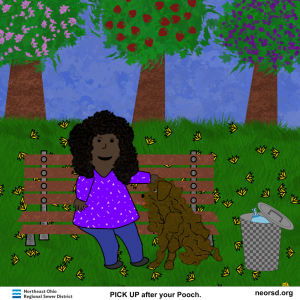Students with mild to severe learning disabilities deserve a quality education where they retain and apply the information learned in the classroom. Students with severe learning disabilities should be given the patience of family and teachers in early education so that they are able to build the confidence to ask questions when they do not understand how to read, write, or count. The main problem with educating students with learning disabilities is that some teachers and administrators do not have the tools to break down complex information to students who learn at a slower pace. Students with learning disabilities have the capacity to learn, but the key is changing the individualized education plan and training teachers to be more flexible.
Helping students with learning disabilities cope with their disability while also knowing they still can learn oftentimes frustrates learners because most teachers may not take the time to make sure they are learning. Special needs students are being cheated. IEPs focus on assessing what a student does not understand and measuring progression each day. Instead of ensuring learning, most teachers help students cope with their disabilities while not acknowledging their learning disabilities. In the Common Core Standards, teachers should revise their education plans for students with learning disabilities to meet their students’ needs correctly.

Many teachers should address the learning of their special needs students by putting themselves in their student’s shoes. How would they feel if they never learned their numbers? How to write their name? Did they not know their address, or did they not know how to read their favorite book or magazine? How do you instill learning and instruct students who do not have the same mental capacity as other learners? Many universities and studies teach the academic side, but once a teacher enters the classroom with students with learning disabilities, how does the teacher break down the information?
According to Gkora “Teachers should consistently motivate their students who have learning disabilities in order to keep them engaged with learning the specific lesson. This is what is called extrinsic motivation. A student with a learning disability will be able to have a support system in their teachers and their parents because they have low intrinsic motivation or they are unable to motivate themselves with learning new information.” [ paraphrased] (Gkora, 2023, 16)
For example, if a student does not know how to write, the best way a teacher can teach the student is to first sit next to their students, maybe two or three in a small group, and find out first which hand each student writes with best. After the teacher assesses this, she sits down, writes down each individual letter, and shows each student individually how to hold their pencil correctly. Then, the teacher makes sure each student knows how to form each letter correctly onto the page. A teacher reinforces this same lesson for each day at least an hour for each school period. If the teacher has an assistant teacher present, students can be split up in small groups, but many students should have reinforcement of these things learned early on so they can remember how to write and copy down information on paper.
“Research has shown that the digital tools offered by Information and Communication Technologies (ICT) can activate the potential and interest of all students but also students with attention difficulties, memory, learning disabilities, and developmental disorders during the course [31]. ” (Gkora, 2023, 17-18). Reinforcement of information can be done with user-friendly technology. “In addition, Sung, Chang, and Huang [28] have studied the impact of computer-assisted teaching strategies on reading and comprehension skills in primary school children with different learning abilities and found that ICT increases reading motivation in students with low reading skills, also improving their reading strategies and reading comprehension. Computer-assisted instruction has such positive effects on their achievement because children with learning disabilities are very attentive to visual stimuli [29]. The researcher Papastergiou [30] studied the way students learn through educational games on the computer and observed that the results of this teaching are better compared to classical teaching and that the motivation to learn is higher than in classical learning. Research has shown that the digital tools offered by Information and Communication Technologies (ICT) can activate the potential and interest of all students, but also students with attention difficulties, memory problems, learning disabilities, and developmental disorders during the course [31]. ” (Gkora, 2023, 17-18)

If a student does not know how to read or count, the same methods can be used, but it takes patience and flexibility on the teacher’s part. It takes the student’s ability to believe in themselves and the reinforcement of this motivation and self-confidence. Technology can be used, but students have to be comfortable, and a good teacher helps them to achieve this. Also, parents should invest in taking the time out to help their children at home too. Creative games on smartphones can also help with special needs.
Marinelli adds, “Through these innovations, SGs [serious games] are also designed to improve the skills of reading/writing for students diagnosed with specific learning disabilities, such as dyslexia or dysgraphia, or simply with difficulties in reading and spelling acquisition. Learning disorders are a heterogeneous group in which the acquisition of reading, spelling, and/or mathematical skills in impaired, and the deficit is not due to a lack of learning opportunities, cognitive disability, or brain trauma. In the last decades, a great number of mobile applications have been created to assess or intervene in the treatment of dyslexic symptoms. Play SGs ensure high levels of emotion and motivation, which can contribute to improve learning.” (Marinelli, 2023, 2)
In conclusion, a special needs student can enjoy learning and have fun with what they are learning. It just takes supportive teachers and family to help them along. Students who are given the special tools to learn and who are able to navigate past their disability can learn and graduate.
References
1. Marinelli, Chiara Valeria, Giuliana Nardacchione, Eugenio Trotta, Raffaele Di Fuccio, Paola Palladino, Luigi Traetta, and Pierpaolo Limone. “The Effectiveness of Serious Games for Enhancing Literacy Skills in Children with Learning Disabilities or Difficulties: A Systematic Review.” Applied Sciences 13, no. 7 (2023): 4512.
2. Gkora, Vana, Karabatzaki, Zoe. “Motivation in learning disabilities and the impact of ICTs. TechHub Journal, 3, (2023), 14-26.






















